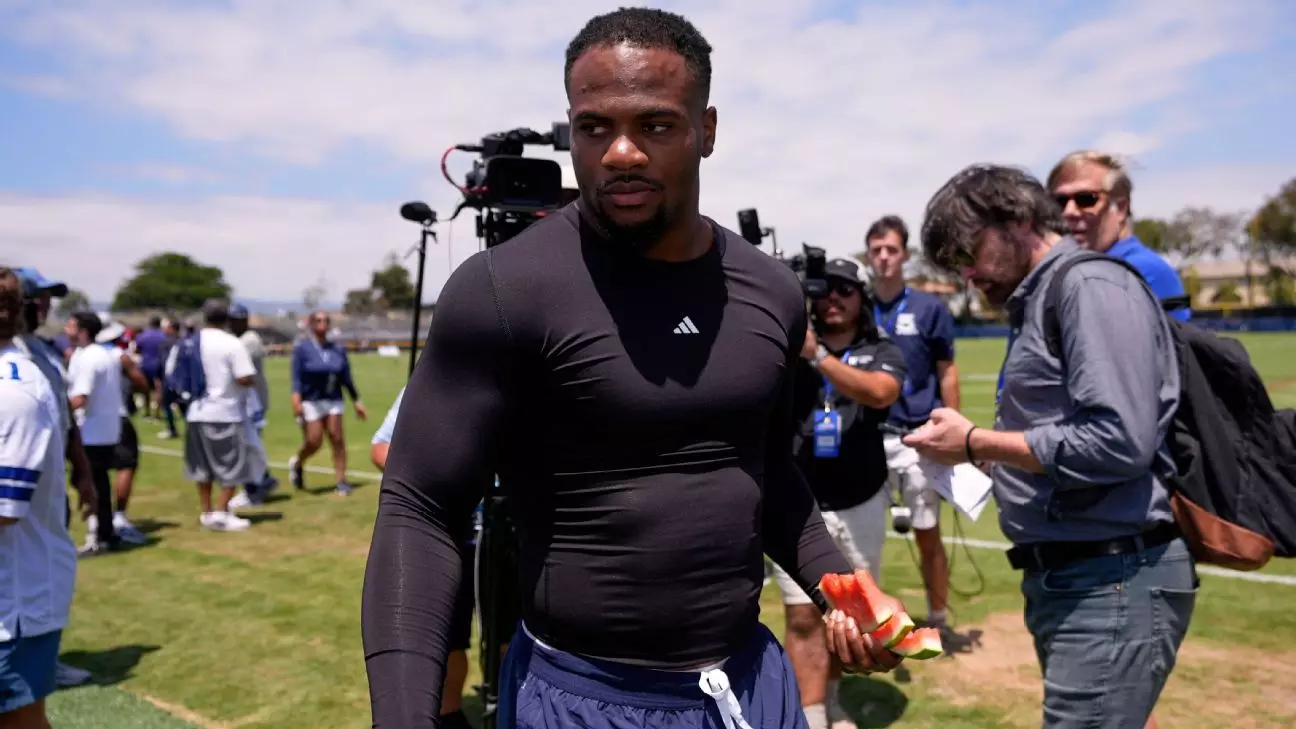In the high-stakes world of National Football League contracts, where negotiations often spiral into prolonged sagas, the Dallas Cowboys’ leadership appears remarkably optimistic about Micah Parsons’s immediate availability. Despite an absence from full-squad practices and a lack of progress on a contract extension, head coach Brian Schottenheimer exudes confidence that Parsons will be ready for the season opener. This unwavering optimism showcases a broader lesson about leadership: the importance of belief and trust during uncertain times. When a franchise is faced with unresolved negotiations, maintaining focus on performance and readiness sends a powerful message to both the team and fans—that professionalism and dedication transcend contract discussions.
However, this confidence must be critically examined. The absence of on-field contact raises concerns about Parsons’s physical preparedness. While Schottenheimer emphasizes Parsons’s understanding of plays through meetings and walkthroughs, football is a game rooted in physicality and quick decision-making — elements hard to fully replicate without direct practice. Relying heavily on Parsons’s self-awareness and the strength staff’s measures may underestimate the risks of injury and slowed conditioning, especially with the season just weeks away. The NFL’s brutal nature means that even a slight lapse in readiness could have significant consequences for Parsons and the team’s defensive plans.
The Critical Balance Between Negotiation and Preparation
The unresolved contract talks between Parsons’s camp and the Cowboys reflect the delicate balance NFL teams must strike between strategic negotiations and team dynamics. On one hand, owner Jerry Jones’s assertion about reaching a deal framework in March suggests there’s a foundation of trust. On the other hand, the lack of recent discussions signifies an uncertain stalemate that can inadvertently affect team chemistry and morale. The outcome of these negotiations is not just financial; it influences on-field effort, focus, and potentially, team cohesion.
Parsons’s current compensation—set on the fifth-year option—places him in a pivotal position: he is a critical player whose presence significantly impacts the Cowboys’ defensive identity. Yet, without a long-term contract, his motivation and physical investment become areas for scrutiny. The fact that Parsons is taking care of his body and staying engaged in meetings indicates professionalism; still, contracts serve as more than just paychecks—they are symbols of value and commitment. The team’s confidence in his health and readiness, despite the unresolved negotiations, underscores a strategic choice to prioritize on-field performance over contractual disputes, a choice that could empower Parsons to showcase his worth when it matters most.
The Hidden Challenges of Absence and the Road Ahead
One of the most pressing issues raised by Parsons’s limited participation is the risk of injury. The physical demands of a rushing edge defender involve quick direction changes, explosive movements, and sustained intensity—all difficult to simulate without on-field practice. Schottenheimer’s acknowledgment of this danger reveals a nuanced understanding: training staff and physiological preparedness are vital, but football’s unpredictable nature can’t be fully controlled.
The decision to proceed with a truncated practice schedule, focusing on game-specific preparations rather than extended physical drills, reflects a pragmatic approach. It also highlights the pressure on the coaching staff to optimize training within constraints—a significant challenge that could either serve as a test of their ingenuity or expose potential vulnerabilities. If Parsons sustains an injury before the season begins, the ripple effect on roster strategy and game planning could be substantial, forcing coaches to adapt quickly and perhaps keep extra pass rushers or reshuffle defensive schemes.
Overall, the situation exposes the often harsh reality of NFL life: talent alone isn’t enough; timing, health, and negotiation tactics play pivotal roles in determining a team’s success. The Cowboys’s confidence in Parsons’s readiness is admirable, but it must be tempered with an awareness of the uncertainties lurking just beneath the surface. As the countdown to kickoff continues, the true test of leadership and resilience will come not just from Parsons’s return to practice but from how well the team navigates these complex negotiations, health concerns, and mounting expectations.

